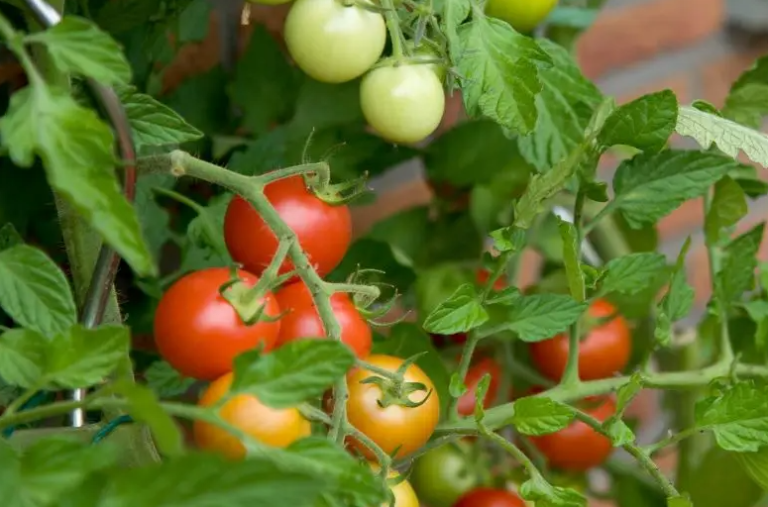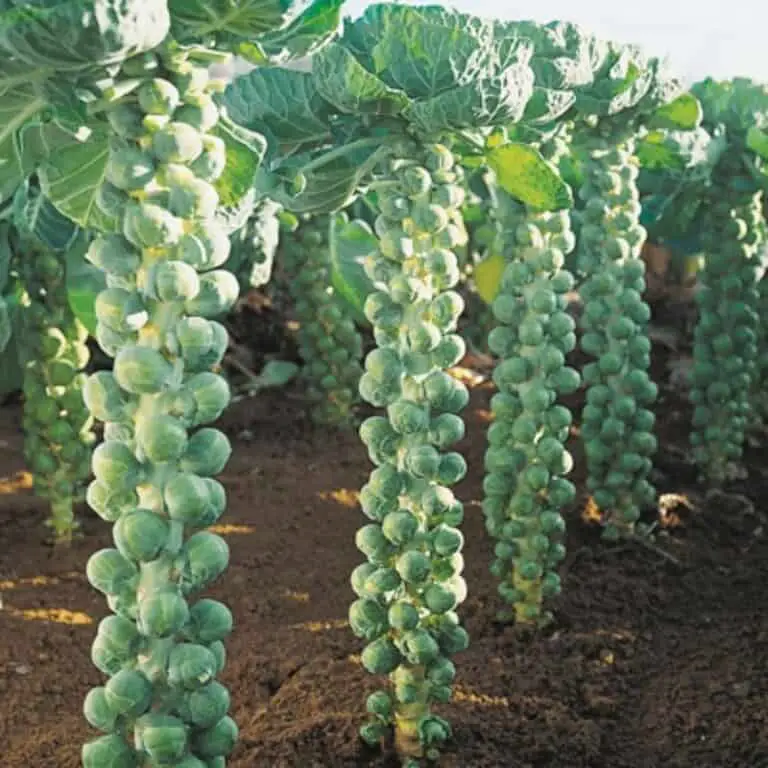What Is the Difference Between Green and White Acorn Squash?

As the winter months roll in, our palates begin to crave comforting and hearty dishes that warm us from within. And what better way to satisfy those cravings than with the delicious versatility of acorn squash? These petite and colorful vegetables have long been a staple in seasonal cooking, bringing vibrant hues and robust flavors to our plates.
In this article, we’ll be exploring two popular varieties of acorn squash: green and white. While both belong to the same family, each has its own unique characteristics that set it apart from its counterpart. So what are the other differences between green and white acorn squash varieties?
So if you’re ready to embark on a journey through winter’s bounty, join us as we delve into the intriguing nuances of these delightful squashes. We’ll uncover their subtle differences in taste and texture. Learn how they can make your favorite recipes taste better, try new ways to cook for more fun, and find out some surprising health benefits along the way.
What Is the Difference Between Green and White Acorn Squash?
When it comes to acorn squash, the color variation isn’t just aesthetic—it hints at distinct flavor profiles, textures, and nutritional nuances. Let’s unravel the differences between the green and white varieties, offering a guide for your culinary endeavors.
1. Physical Characteristics

a) Description of Appearances:
Green Acorn Squash: The green acorn squash is a vibrant and eye-catching winter squash variety. It typically has a dark green skin with prominent ridges running from the stem to the base. It has a distinctive shape, resembling an acorn or small pumpkin. The outer skin is often smooth but can sometimes have slight bumpy textures, depending on the specific variety.
White Acorn Squash: In contrast, white acorn squash has a pristine and pale appearance that stands out among other winter squashes. Its cream-colored skin may have light green or yellowish undertones, creating an appealing visual contrast. Like its green counterpart, white acorn squash has distinct ridges along its surface but tends to be slightly more elongated in shape.
b) Comparison of Skin Textures:
There are some important differences between the textures of green and white acorn squash that need to be brought up. Green acorn squash possesses tougher skin compared to its white counterpart. This firmness actually helps preserve the delicate flesh inside during storage or cooking processes. On the other hand, white acorn squash tends to have thinner and more tender skin, which can easily get damaged when mishandled.
Although these textural variations do not significantly affect their flavor profiles or culinary uses, they contribute to each variety’s overall aesthetic appeal and potential cooking techniques employed during meal preparation.
| Read: How Do You Know When Acorn Squash Is Ripe Inside? |
Flavor Profile and Culinary Uses
a) Differences in taste – sweetness levels:
When it comes to taste, green and white acorn squash offer distinct flavor profiles. Green acorn squash tends to have a nuttier and slightly earthier taste compared to its white counterpart. It is often described as having a milder sweetness, making it versatile for both savory and sweet dishes.
On the other hand, white acorn squash leans towards a sweeter flavor with hints of vanilla or buttery undertones that can add depth to recipes.
b) Texture Comparisons – smoothness versus creaminess when cooked:
In terms of texture, green acorn squash has flesh that is more fibrous and mealy after cooking. While this might discourage some people from using it in certain preparations like soups or purees, it also means that green acorn squash holds its shape better when roasted or stuffed.
In contrast, white acorn squash boasts smoother and moister flesh when cooked. Its creamy consistency makes it an ideal option for creating velvety soups or adding richness to baked goods like muffins or pies.
c) Suitable cooking methods for each variety (roasting vs steaming):
Both varieties can be roasted, steamed, or even microwaved, depending on personal preference and the desired outcome. However, there are specific cooking methods that accentuate the unique qualities of each type of squash.
For green acorn squash’s denser texture and nutty flavor profile, roasting brings out its natural sweetness while adding caramelization to the edges for an enjoyable contrast in flavors and textures. White acorn squash benefits from gentle steaming, as this method preserves its delicate creaminess without sacrificing any moisture content.
So whether you’re looking for a vegetable with a subtle sweetness that complements various dishes or one with a rich, creamy texture perfect for comforting classics like soup, experimenting with different types of winter squashes like green and white acorns can open up a new world of flavors and culinary possibilities.
| Also see: Zucchini Acorn Squash Hybrid |
Time Required for Meal Prep Using Both Types Based on Firmness Differences
When it comes to meal prep, the firmness of the squash can play a significant role in how quickly you can whip up a delicious dish. This is where the differences between green and white acorn squash become apparent. Green acorn squash tends to have thicker skin and denser flesh, making it slightly more challenging to prepare than its white counterpart.
Peeling and cutting through the tough skin of green acorn squash may require some muscle power and a sharp knife. However, once you’ve conquered that hurdle, the rest of the preparation is relatively straightforward. Removing the seeds and slicing or dicing the flesh into your desired shape should be smooth sailing from there.
On the other hand, with its smoother and more delicate skin, white acorn squash can be much easier to handle when it comes time to prep your meals. Its texture makes peeling less arduous – simply give it a good scrub under running water before using a vegetable peeler or paring knife to remove any imperfections like blemishes or spots.
Nutritional Value
The nutritional value of green and white acorn squash is about the same. Both types are good for you in many ways. However, there are some slight differences between the two that may sway your decision when choosing which one to incorporate into your meals.
Green acorn squash is rich in vitamin C, providing nearly 30% of the recommended daily intake per serving. It also contains significant amounts of potassium, which helps regulate blood pressure and supports proper muscle function.
On the other hand, white acorn squash boasts higher levels of fiber compared to its green counterpart. Fiber is essential for maintaining a healthy digestive system and can aid in weight management by promoting feelings of fullness.
In terms of vitamin content, both types have their strengths. Green acorn squash shines in vitamins A and B6, contributing to good vision health and cognitive function, respectively. White acorn squash showcases higher levels of vitamin K, playing a crucial role in blood clotting and bone health.
Overall, incorporating either variety into your diet will provide an excellent source of antioxidants such as beta-carotene and contribute to your overall well-being.
To make it easier for you to compare the nutritional value at a glance:
| Nutrient | Green Acorn Squash | White Acorn Squash |
| Vitamin C | High | Moderate |
| Fiber | Low | High |
| Vitamin A | High | Moderate |
| Vitamin B6 | Moderate | Low |
| Vitamin K | Moderate | High |
Remember that these values may vary slightly depending on size and ripeness, regardless. Fresh acorn squashes are packed with necessary nutrients that play vital roles in supporting your overall health!
Recipe Suggestions for Acorn Squash
1. Roasted Green Acorn Squash with Maple Butter Glaze:
Green acorn squash is known for its robust flavor and firm texture, making it a fantastic choice for roasting. To enhance the natural sweetness of this squash variety, try glazing it with a delectable maple butter mixture.
Start by cutting the green acorn squash in half and scooping out the seeds. Then, brush each half with melted butter mixed with maple syrup, sprinkle some salt and pepper to taste, and roast them cut-side down on a baking sheet at 400°F (200°C) for about 30-40 minutes until tender.
The result is a caramelized exterior and velvety flesh that pairs beautifully as a side dish alongside grilled meats or poultry.
2. White Acorn Squash Soup with Garlic and Thyme:
White acorn squash may be less sweet than its green counterpart, but it is equally delicious when transformed into a comforting soup. This pale-fleshed variety has a milder flavor profile that allows other ingredients to shine through.
For an enticing white acorn squash soup recipe, sauté diced onions, minced garlic, and fresh thyme in olive oil until fragrant before adding peeled and cubed white acorn squash to the pot along with vegetable broth to cover the ingredients.
Simmer until the squashes are tender enough to easily mash or puree using an immersion blender or food processor. Season it further if needed before serving hot garnished with crispy croutons or chopped herbs like parsley.
3.Spring Salad Stuffed White Acorn Squash:
For those looking for something more innovative yet light-hearted featuring white acorn squash, consider stuffing halved squashes with vibrant spring salad ingredients! Start by preheating your oven to 375°F (190°C). Cut each white acorn squash in half lengthwise, then scoop out any seeds from their centers.
Place these prepared halves on a baking sheet and drizzle with olive oil, salt, and pepper. Roast them flesh side down for around 20-25 minutes, or until tender when the fork piercing test passes through easily.
Once out of the oven, allow it to cool for a few minutes. A vibrant spring salad is packed with mixed greens, cherry tomatoes, cucumber ribbons, thinly sliced red onion slivers, and crumbled feta cheese atop each half as desired.
Drizzle some vinaigrette dressing just before serving, which offers a delightful combination of flavors that bring brightness and contrast to your dinner table.
These tempting recipe suggestions highlight how both green and white acorn squash can be used in distinct ways that cater to different dishes, such as savory side dishes like roasted vegetables or soups bursting with warmth and earthy essence. Get creative when experimenting with these versatile winter squashes – they might just elevate your culinary endeavors to new heights!
Conclusion
Both green and white acorn squash offer a wealth of culinary possibilities, each with their own unique characteristics. The green variety is known for its vibrant color and nutty flavor, making it a popular choice for roasting or stuffing. Its dense flesh holds up well to heat, creating a satisfying texture in dishes like soups and stews.
On the other hand, the white acorn squash presents a more delicate flavor profile that lends itself beautifully to sweet preparations. Whether baked into pies or pureed into creamy bisques, this milder squash offers a subtle sweetness that pairs wonderfully with spices like cinnamon and nutmeg.
But let’s not get caught up in categorizing these squashes as strictly savory or sweet options. Both varieties can be used interchangeably in many recipes, allowing you to experiment and discover new flavor combinations. For instance, try using green acorn squash as an unexpected addition to your next batch of muffins or incorporating white acorn squash into a savory gratin alongside potatoes and cheese.
In conclusion, whether you’re drawn to the earthy richness of green acorn squash or the gentle sweetness of its white counterpart, both types offer endless possibilities in the kitchen. With their distinct flavors and versatile nature, these winter squashes are sure to elevate any dish they grace – so go ahead and let your culinary creativity soar!






